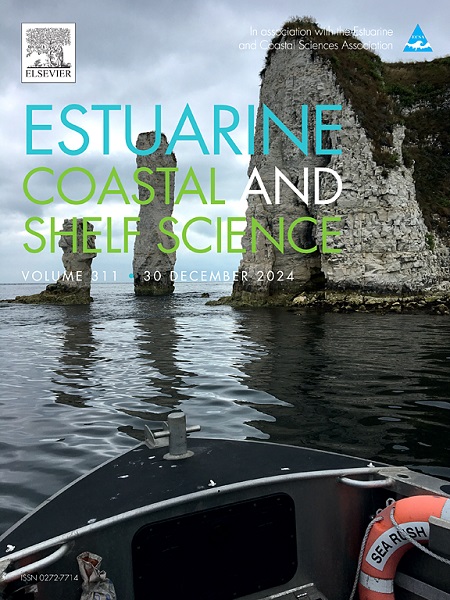2024年亚得里亚海北部发生了非同寻常的粘液事件——预示着未来的气候?
IF 2.6
3区 地球科学
Q1 MARINE & FRESHWATER BIOLOGY
引用次数: 0
摘要
在春末和夏季,亚得里亚海北部海岸偶尔会发生大型粘液事件,对旅游业、渔业、水产养殖和底栖生物产生重大影响。然而,在过去的20年里,直到2024年才有这样的事件记录,当时粘液聚集物在6月初重新出现,并持续到9月初。本文描述了2024年的事件,并利用现有的观测系统(浮标、CTD剖面)、卫星观测(海面温度、叶绿素-a)和再分析产品(ERA5再分析的热通量),量化了事件发生之前和期间的大气、海洋和水文条件。2024年的黏液事件是由异常温暖的冬季和早春,以及亚得里亚海北部高盐的居住水域造成的。这些条件导致2月份的分层高于平均水平,比往常更早开始。在此基础上,4 - 7月出现了几次极端的河流流量(最大值高达5000 m3/s,远远超过某一天的第90个百分点),进一步加强了分层。5月下旬和6月下旬的排放高峰导致营养丰富的沿海水域在1-2周内向东部海岸线扩散,引发沿岸粘液大量繁殖。随着河流流量的减少,淡水在大陆架上的扩散受到限制,导致粘液生长停止。考虑到2024年1月至8月空气和海洋表面温度几乎持续高于当前气候平均温度2-4°C,这一事件为了解气候变暖条件下的粘液事件提供了有价值的案例研究。本文章由计算机程序翻译,如有差异,请以英文原文为准。
Extraordinary mucilage event in the northern Adriatic in 2024—a glimpse into the future climate?
Large mucilage events occasionally occur along the northern Adriatic coast during late spring and summer, significantly impacting tourism, fisheries, aquaculture, and benthic organisms. However, no such events had been recorded in the last two decades until 2024, when mucus aggregates reappeared in early June and persisted until beginning of September. This paper describes the 2024 event and quantifies the atmospheric, oceanic, and hydrological conditions preceding and during the event using available observing systems (buoys, CTD profiles), satellite observations (sea surface temperature, chlorophyll-a), and reanalysis products (heat fluxes from ERA5 reanalysis). The 2024 mucilage event was preconditioned by an unusually warm winter and early spring, coupled with highly saline residing waters in the northern Adriatic. These conditions led to higher-than-average stratification, initiated earlier than usual, in February. On top of that, several extremes in river discharge (with maximum values up to 5000 m3/s, far exceeding the 90th percentile for a given day) that further strengthened the stratifications were observed from April to July. Discharge peaks in late May and late June resulted in nutrient-rich coastal waters spreading towards the eastern coastline within 1–2 weeks, triggering mucilage blooms along the coast. As the river discharges decreased, the spread of freshened waters over the shelf was limited, leading to a halt in mucilage growth. Given that both air and sea surface temperatures were from January to August 2024 almost constantly 2–4 °C higher than the present climate averages, this event provides a valuable case study for understanding mucilage events under warmer climate conditions.
求助全文
通过发布文献求助,成功后即可免费获取论文全文。
去求助
来源期刊
CiteScore
5.60
自引率
7.10%
发文量
374
审稿时长
9 months
期刊介绍:
Estuarine, Coastal and Shelf Science is an international multidisciplinary journal devoted to the analysis of saline water phenomena ranging from the outer edge of the continental shelf to the upper limits of the tidal zone. The journal provides a unique forum, unifying the multidisciplinary approaches to the study of the oceanography of estuaries, coastal zones, and continental shelf seas. It features original research papers, review papers and short communications treating such disciplines as zoology, botany, geology, sedimentology, physical oceanography.

 求助内容:
求助内容: 应助结果提醒方式:
应助结果提醒方式:


